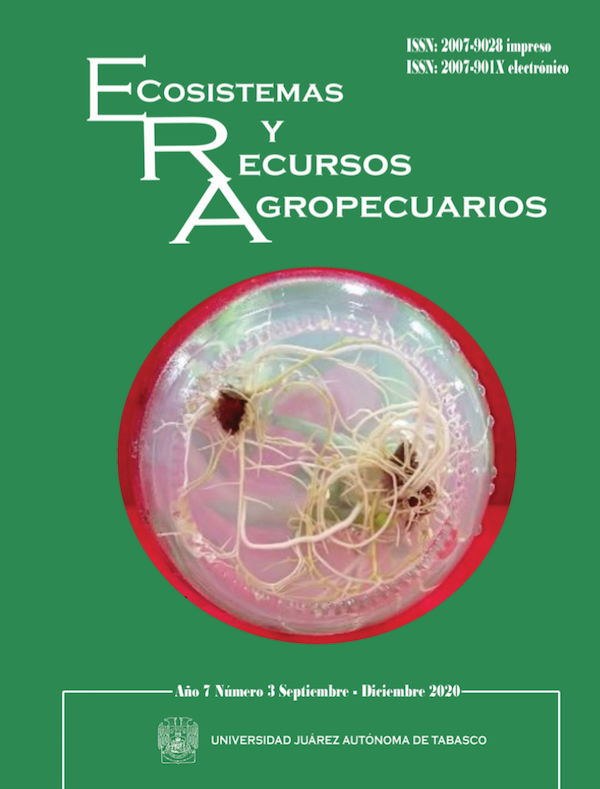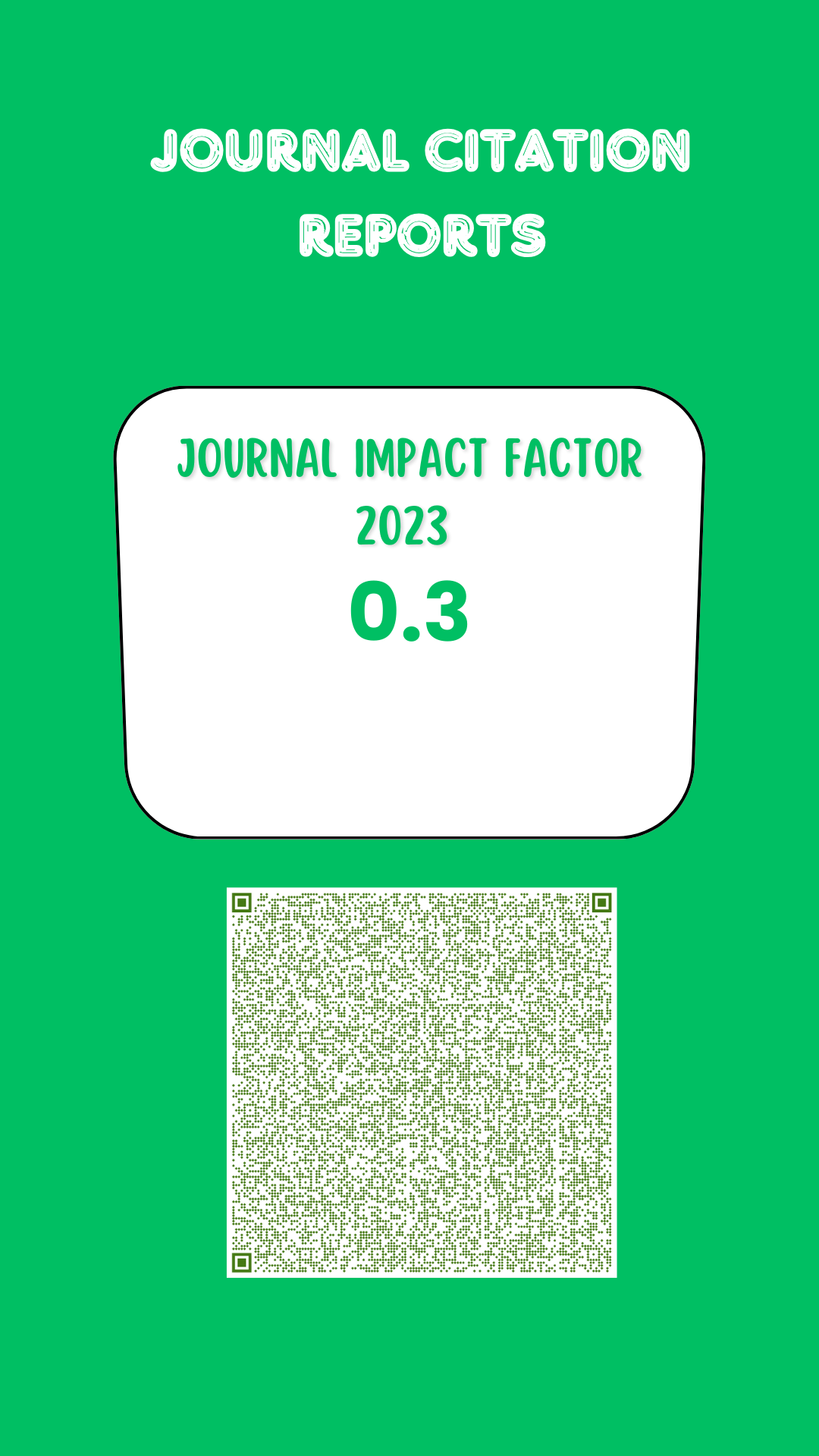Species consumed by goats in Sierra La Laguna, Baja California Sur
DOI:
https://doi.org/10.19136/era.a7n3.2526Keywords:
caprinos, etnobotánica, pastoreo, rancheros, vegetación.Abstract
The local knowledge of the wild species that goats consume in the areas surrounding the natural reserves contributes to the establishment of op- tions for livestock production systems associated to the semiarid zones, with a focus on the preservation of the species, the economy of the farmers and the safeguarding of the environment. The objective was to develop a quantitative method to evaluate the forage importance index of these species (based on empirical knowledge), defined as the primary function played by a species of goat plant in the goat farmers culture in an area of buffering of the Sierra La Laguna Biosphere Reserve in Baja California Sur. Seventeen random surveys were carried out to develop the method and calculate the Forage Importance Index (FII) of the species, using eight indices (Abundance Perception Index, Frequency of Use Index, Consumed Organs Index, Consumption Season Index, Category Food and Index of Climatological Conditions) as well as the Salience Index and the Mention of Frequency. There were 37 species of plants associated with the area, the most abundant by family are 10 Fabaceaes, 4 Cactacea, 4 Euphorbiaceaes and 3 Asteraceaes. The most mentioned species include vinorama (Acacia farnesiana), palo zorrillo (Cassia emarginata), palo verde (Cercidium floridum) and ironwood (Pithecollobium confine).The five species with the highest value of FII include vinorama (Acacia farnesiana), palo zorrillo (Cassia emarginata), palo verde (Cercidium floridum), ironwood (Pithecollobium confine) and palo eva (Pithecellobium undulatum).
Downloads
References
Alonso ALE, Montoya A, Kong A, Estrada-Torres A, Garibay-Orijel R (2014) The cultural significance of wild mushrooms in San Mateo Huexoyucan, Tlaxcala, Mexico. Journal of Ethnobiology and Ethnomedicine 10 (27): 1-28 doi:10.1186/1746-4269-10-27.
Ángel SYK, Pimentel-Tapia ME, Juárez-Salazar JC (2017) Importancia cultural de vegetación arbórea en sistemas ganaderos del municipio de San Vicente del Caguán, Colombia. U.D.C.A Actualidad y Divulgación Científica 20(2): 393-401.
Biro E, Babai D, Bodis J, Molnar Z (2014) Lack of knowledge or loss of knowledge? traditional ecological knowledge of population dynamics of threatened plant species in East-Central Europe. Journal for Nature Conservation 22 (4): 318-325.
Comisión Nacional de Áreas Naturales Protegidas. 2003. Programa de Manejo Reserva de la Biosfera Sierra La Laguna. Comisión Nacional de Áreas Naturales Protegidas. Camino al Ajusco No. 200, Col. Jardines en la Montaña, Tlalpan C.P. 14210, México, D.F. 211 p.
Garibay OR, Caballero J, Estrada-Torres A, Cifuentes J 2007 Understanding cultural significance, the edible mushrooms case. Journal of Ethnobiology and Ethnomedicine 3 (4): 1-18 doi:10.1186/1746-4269-3-4.
Ghorbani A, Langenberger G, Sauerborn J (2012) A comparison of the wild food plant use knowledge of ethnic minorities in Naban River Watershed National Reserve, Yunnan, SW China. Journal of Ethnobiology and Ethnomedicine 8 (17): 1-10.
Heywood VH (2011) Ethnopharmacology, food production, nutrition, and biodiversity conservation: towards a sustainable future for indigenous peoples. Journal of Ethnopharmacology 137: 1-15.
Hoffman B, Gallaher T (2007) Importance indices in ethnobotany. Ethnobotany Research & Applications 5: 201-218.
INEGI (2010) Censo de Población y Vivienda 2010. Instituto Nacional de Estadística y Geografía. http://cuentame.inegi.org.mx/monografias/informacion/bcs/poblacion/distribucion.aspx?tema=me&e=03 Censo de Población y Vivienda 2010. Fecha de consulta: 17 de junio de 2019.
Kujawska M, Łuczaj Ł (2015) Wild edible plants used by the polish community in Misiones, Argentina. Human Ecology 43: 855-869. DOI 10.1007/s10745-015-9790-9.
Lagos-Witte S, Sanabria-Diago OL, Chacón P, García R (2011) Manual de Herramientas Etnobotánicas relativas a la Conservación y el Uso Sostenible de los Recursos Vegetales. Red Latinoamericana de Botánica. Santiago de Chile. 134 p.
León-de la Luz JL, Domínguez-Cadena R, Medel-Narváez A (2012) Florística de la selva baja caducifolia de la península de Baja California, México. Botanical Sciences. 90 (2): 143-162.
Madeiros MFT, Silva PS, Albuquerque UP (2011) Quantification in ethnobotanical research: an overview of indices used from 1995-2009. Sitientibus Série Ciencias Biologicas. 11(2): 211-230.
Molnar Z, Kis J, Vadasz C, Papp L, Sandor I, Beres S, et al. (2016) Common and conflicting objectives and practices of herders and conservation managers: the need for a conservation herder. Ecosystem Health and Sustainability. 2(4): e01215.
Phillips O, Gentry AH (1993) The useful plants of Tambopata, Peru: II. Additional hypothesis testing in quantitative ethnobotany. Economic Botany. 47 (1): 3343.
Pieroni A (2001) Evaluation of the cultural significance of wild food botanicals traditionally consumed in norhwestern Tuscany, Italy. Journal of Ethnobiology 21 (1): 89-104.
Pío-León JF, Delgado-Vargas F, Murillo-Amador B., León de la Luz JL, Vega-Aviña R, Nieto-Garibay A, Córdoba-Matson MV, Ortega-Rubio A (2017) Environmental traditional knowledge in a natural protected area as the basis for management and conservation policies. Journal of Environmental Management 201: 63-71.
Smith JJ (1993) Using ANTHOPAC 3.5 and a spreadshseet to compute a free list Salience Index. Cultural Anthropology Methods 5 (3): 1-3.
Solano PC, Blancas J (2018) Etnobotanica de Wirikuta: Uso de recursos vegetales silvestres en el desierto de San Luis Potosi, Mexico. Revista Etnobiologia 16: 54-77.
TIBCO Software Inc (2018) Statistica (data analysis software system), version 13. http://tibco.com.
Turner NJ (1998) The importance of a rose. Evaluating the cultural significance of plants in Thompson and Lillooet Interior Salish. American Anthropologist 90: 272-290.
Turner NJ, Łuczaj ŁJ, Migliorini P, Pieroni A, Dreon AL, Sacchetti LE, Paoletti MG (2011) Edible and tended wild plants, traditional ecological knowledge, and agroecology. Critical Reviews in Plant Science 30: 198-225.
Downloads
Published
Issue
Section
License
Aviso de copyright
Los autores que se envían a esta revista aceptan los siguientes términos:
una. Los autores conservan los derechos de autor y garantizan a la revista el derecho a ser la primera publicación del trabajo con una licencia de atribución de Creative Commons que permite a otros compartir el trabajo con un reconocimiento de la autoría del trabajo y la publicación inicial en esta revista.
B. Los autores pueden establecer acuerdos complementarios separados para la distribución no exclusiva de la versión del trabajo publicado en la revista (por ejemplo, en un repositorio institucional o publicarlo en un libro), con un reconocimiento de su publicación inicial en esta revista.
C. Se permite y se anima a los autores a difundir su trabajo electrónicamente (por ejemplo, en repositorios institucionales o en su propio sitio web) antes y durante el proceso de envío, ya que puede conducir a intercambios productivos, así como a una cita más temprana y más extensa del trabajo publicado. (Consulte El efecto del acceso abierto).



